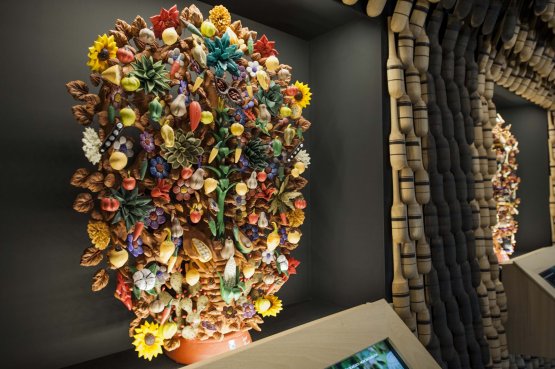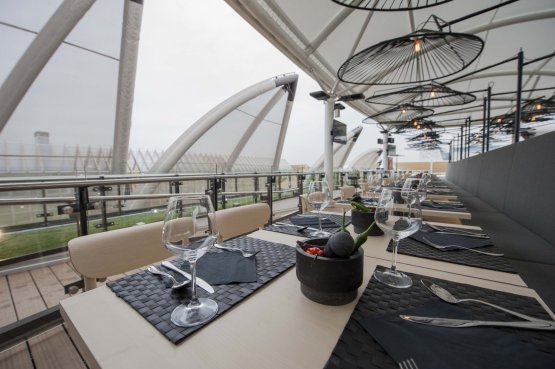At first glance, guessing what inspired the Mexican pavilion could not be easy. You need to move a little backwards, to understand that there are leaves embracing the main facade, leaves from a huge cob. Corn is indeed one of the fundamental elements in Mexico’s presence at Expo Milano 2015, but most of all it is the symbol par excellence of the country’s gastronomic culture.
Indeed Mexico is the place of origin of this essential food, which for the Maya civilization represented not just a sacred ingredient but a divinity too. Man himself, according to their religion, is a ball of water and corn shaped by the gods. Even today it is the basic ingredient in a cuisine that, in 2010, was included in Unesco’s Immaterial Cultural Heritage List.

The Tree of life celebrates the indigenous fruits and vegetables of Mexico
This inspiration was caught by architect
Francisco Lòpez Guerra, who designed the pavilion spread over five levels connected by flights of stairs, following a system inspired by the ancient terraced fields created during the Netzahualcoyotl empire.
As soon as you enter, you are welcomed by a creative fountain, the work of artist Maria José de la Macorra, fed by a circular flux of water that triggers the movement of beads that once again represent corn grains, while the sound recalls that of the rain, a source of life on earth.
Modernity and ancient history meet a little further up, going up the flights of stairs, with the stone statue dedicated to the Prince of Five Flowers
Macuilxochitl, dating back to the post-classic age (1250-1521), and the sculptures made with carved obsidian by
Jorge Yàzpik. A different, wood sculpture awaits the visitors on the floor above: the
Tree of life one of the most emblematic creations of Mexican craftsmen, with a thousand images overflowing from its branches. The two examples in the Mexican pavilion are clearly dedicated to food: from one, traditional Mexican utensils are born; from the other, indigenous fruits and vegetables.

Restaurant Besame mucho, on the pavilion’s terrace
From a culinary point of view, Mexico shows an extraordinary diversity, thanks also to the many traditions of the 32 states composing its federation: six of these (the first being Michoacán) will show, for one month each, temporary installations dedicated to the unique characters of their territory. In this room, in the background, a large virtual kitchen stands out, with a screen showing in a continuous rotation the most prominent chefs in the country presenting some of the most famous recipes in Mexican tradition, in their interpretation.
The visit ends in the best possible way, with the view you can enjoy from the terrace on top of the pavilion: this is also the place where you can find restaurant
Besame mucho (the super famous song turns 75 this year), whose menu, constantly updated, will present many of the most typical Mexican delicacies. A special programme with guest chefs coming from Mexico to Milan to further enrich the culinary offer of the pavilion will also be presented in the next few weeks.